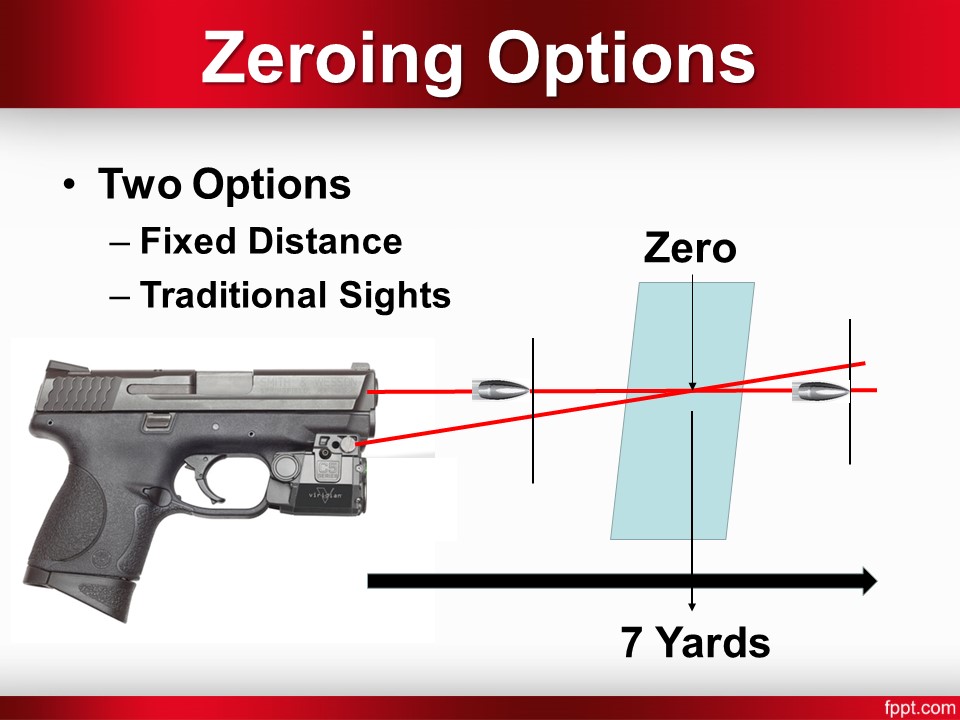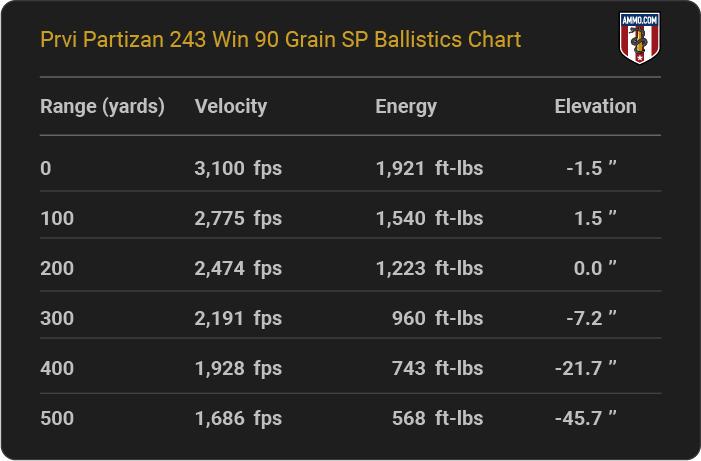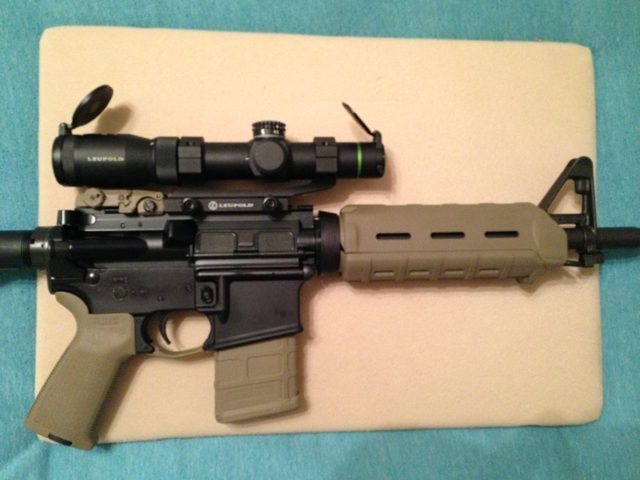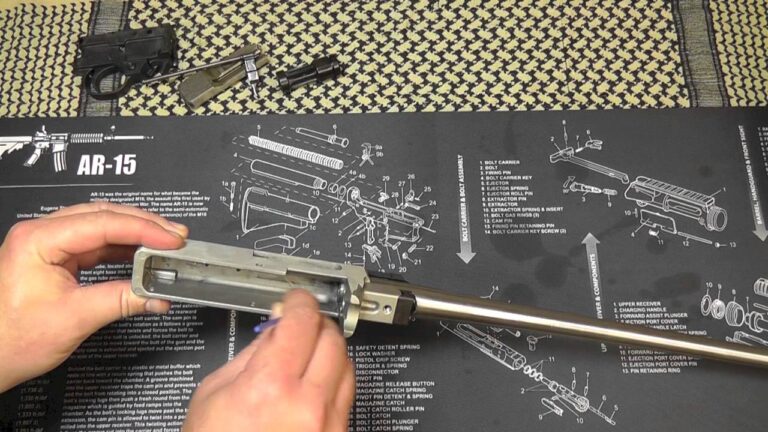How To Sight In A Laser On A Pistol: Expert Tips & Techniques
Sighting in a laser on a pistol is vital for accurate shooting. It ensures that your aim is true and reliable.
If you want to enhance your shooting precision, learning how to sight in a laser on a pistol is essential. This process aligns the laser with your pistol’s point of impact, making it easier to hit your target. Whether you’re a novice shooter or an experienced marksman, understanding this skill can improve your shooting experience.
It’s a straightforward process that boosts confidence and accuracy. In this guide, we’ll walk you through the steps needed to sight in a laser on a pistol, ensuring you hit the mark every time. Let’s get started with this important shooting technique.
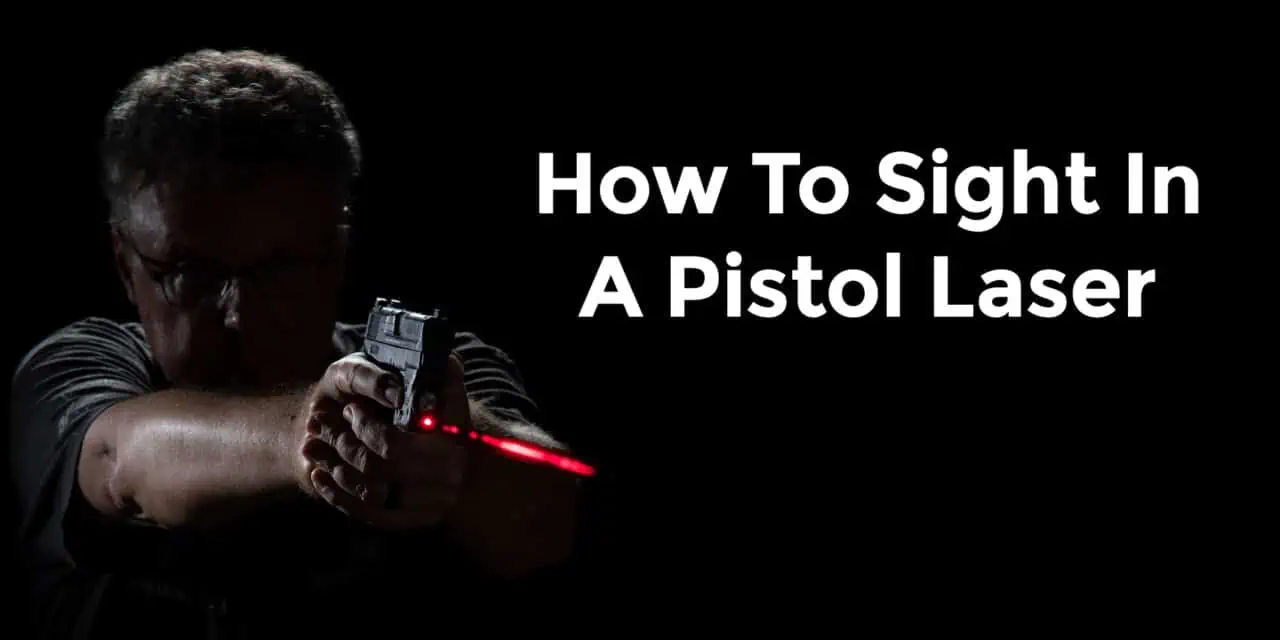
Credit: www.ammoman.com
Choosing The Right Laser Sight
Choosing the right laser sight is crucial for accurate shooting. The right laser sight can enhance your aiming precision and overall shooting experience. Let’s dive into the types of laser sights and the factors to consider when making your choice.
Types Of Laser Sights
There are different types of laser sights available for pistols. Each type has its own benefits and ideal uses.
- Red Laser Sights: These are the most common and affordable options. They are visible in low light conditions and are great for indoor use.
- Green Laser Sights: These are brighter and more visible in daylight. They are more expensive but offer better visibility in various lighting conditions.
- Infrared Laser Sights: These are typically used with night vision equipment. They are not visible to the naked eye and are used by military and law enforcement.
Factors To Consider
When choosing a laser sight, consider these important factors:
- Compatibility: Ensure the laser sight fits your pistol model. Not all laser sights are universal.
- Visibility: Decide if you need a laser that is visible in daylight or low light.
- Battery Life: Check the battery life of the laser sight. A longer battery life means fewer replacements.
- Durability: Look for a laser sight that can withstand recoil and rough handling.
- Ease of Installation: Some laser sights are easier to install than others. Consider your comfort level with installation.
Here is a quick comparison table:
| Type | Visibility | Cost | Ideal Use |
|---|---|---|---|
| Red Laser Sights | Low light | Affordable | Indoor |
| Green Laser Sights | Daylight | Expensive | All lighting conditions |
| Infrared Laser Sights | Night vision | Very expensive | Military/Law enforcement |
Mounting The Laser Sight
Mounting the laser sight on your pistol is a crucial step. It ensures accuracy and enhances your shooting experience. Whether you are a beginner or an experienced shooter, proper mounting is essential. In this section, we will cover the tools you need and a step-by-step guide to mounting the laser sight.
Tools Needed
Before you start, gather the necessary tools. You will need:
- A screwdriver
- The laser sight
- Mounting hardware (usually included with the sight)
- Cleaning cloth
- Thread locker (optional)
Having these tools ready will make the process smoother.
Step-by-step Guide
Follow these steps to mount your laser sight:
- Unload your pistol: Ensure your pistol is unloaded. Safety first.
- Clean the mounting area: Use a cloth to clean the area. Remove any dirt or oil.
- Attach the mount: Align the mount with the rail on your pistol. Secure it using the screws provided.
- Install the laser sight: Slide the laser sight onto the mount. Tighten the screws.
- Check alignment: Ensure the laser is aligned with the barrel. Adjust if necessary.
- Apply thread locker: This step is optional. It helps keep screws tight.
After following these steps, your laser sight should be securely mounted. Ready for the next phase.
Safety Precautions
Before you start sighting in a laser on a pistol, understand the importance of safety. Handling firearms and lasers requires caution and attention. Missteps can lead to accidents or injuries. Follow these safety precautions to ensure a safe experience.
Handling The Pistol
Always assume the pistol is loaded. Check the chamber and magazine to ensure it’s empty. Keep the muzzle pointed in a safe direction. Never point the pistol at anything you do not intend to shoot.
Use a proper grip. Hold the pistol firmly but not too tightly. Maintain control to prevent accidental discharge. Keep your finger off the trigger until ready to fire.
Laser Safety Tips
Lasers can damage eyes. Never point the laser at anyone’s face or eyes. Ensure that the laser is set at the lowest visible power.
Check the laser alignment without looking directly into the beam. Use reflective surfaces or other safe methods. Always follow the manufacturer’s instructions for laser use.
Store the pistol and laser separately when not in use. This prevents unauthorized access and potential misuse. Ensure both are kept out of reach of children and untrained individuals.
Establishing A Baseline
Establishing a baseline is a crucial first step in sighting in a laser on a pistol. This process ensures your laser aligns with your point of aim. It lays the groundwork for accurate shooting.
Initial Setup
Begin by ensuring your pistol is unloaded. Safety first. Check the chamber and remove any magazines. This step is vital to avoid accidents.
Next, choose a stable surface to rest your pistol. A shooting bench or table works well. Use a gun vise or sandbags to keep the pistol steady. This stability is essential for accurate alignment.
Aligning The Laser
Turn on the laser sight. Point the pistol at a target about 15 yards away. This distance is a good starting point for alignment.
Look through the iron sights and align them with the target. Adjust the laser so that its dot aligns with the iron sights. This alignment ensures the laser matches your line of sight.
Make small adjustments to the laser. Check the alignment after each adjustment. Patience is key. This step might take a few minutes.
Once the laser aligns with the iron sights, take a few practice shots. Check where the bullets hit the target. Adjust the laser if needed. Repeat until the laser is perfectly aligned.
Zeroing The Laser Sight
Zeroing the laser sight on your pistol improves your shooting accuracy. It aligns the laser with your point of impact. Follow these steps to ensure your laser sight is accurately set.
Choosing The Distance
Select the distance for zeroing your laser sight. A common choice is 10 yards. This distance works well for most handguns. It balances accuracy and practicality.
Adjusting Windage And Elevation
Windage adjusts the laser horizontally. Elevation adjusts it vertically. Begin with windage. Use the adjustment screws on the laser. Turn the screws slowly. Check the alignment after each turn. Aim at a target and fire a few rounds.
Now, adjust the elevation. Repeat the process. Make small adjustments and test frequently. This ensures your laser is perfectly aligned. Your shots should now hit where the laser points.
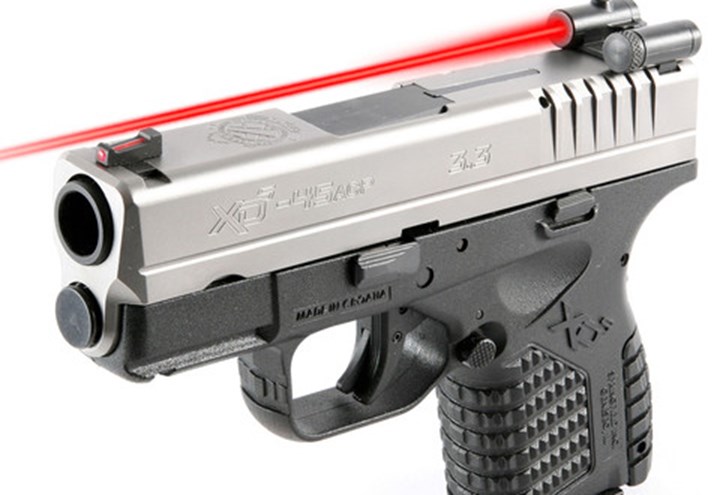
Credit: www.nrablog.com
Testing Accuracy
Testing accuracy is crucial when sighting in a laser on a pistol. It ensures your shots hit the target as planned. It’s important to test your accuracy under different conditions. This section will guide you through shooting techniques and making adjustments.
Shooting Techniques
Start by setting up a target at a reasonable distance. Use a stable shooting position. Focus on your grip and stance. Align the laser with your iron sights. Fire a few practice shots to get comfortable. Observe where your shots land on the target. This will give you a baseline.
Consistency is key. Use the same shooting technique each time. This helps you see how accurate your laser is. If the shots are off, it’s time to make some adjustments.
Making Adjustments
If your shots are hitting high or low, adjust the laser’s elevation. Use the tool that came with your laser. Turn the adjustment screw in small increments. Re-test your accuracy after each adjustment.
If your shots are hitting left or right, adjust the windage. Again, use small turns and re-test. This fine-tuning process is crucial. It ensures your laser is aligned perfectly. Remember, patience is important. Small changes make a big difference.
Continue this process until your shots are consistently hitting the center of the target. This means your laser is sighted in correctly. Practice regularly to maintain your accuracy.
Maintaining The Laser Sight
Keeping your laser sight in top condition ensures accuracy and reliability. Regular maintenance can prevent issues and extend the life of your equipment. Follow these simple steps to maintain your laser sight.
Cleaning Tips
Dust and debris can affect the laser’s accuracy. Use a soft, lint-free cloth to clean the lens. Avoid using abrasive materials or harsh chemicals. Gently wipe the lens in a circular motion. Ensure the lens is clear and free of smudges.
Check the housing of the laser sight for any dirt. Use a small brush to remove dust from hard-to-reach areas. Keep the laser sight dry and store it in a clean, dry place. Regular cleaning ensures the laser performs at its best.
Battery Management
Proper battery management is crucial for a reliable laser sight. Check the battery life regularly. Replace the batteries when they are low to avoid sudden power loss. Always keep spare batteries on hand.
Remove the batteries if you will not use the laser sight for an extended period. This prevents battery leakage and damage. Store the batteries in a cool, dry place. Follow the manufacturer’s instructions for battery care and replacement.
Common Issues And Solutions
Sighting in a laser on a pistol can be a challenging task. Often, gun owners face common issues that can hinder the process. Below, we will explore some of these issues and provide solutions to help you achieve an accurate laser sight.
Troubleshooting Tips
Here are some troubleshooting tips to resolve common issues with laser sights:
- Laser Misalignment: Ensure the laser is securely attached. Use the adjustment screws to fine-tune the laser.
- Battery Issues: Check if the batteries are fully charged. Replace old batteries if necessary.
- Loose Mounts: Ensure all screws are tight. A loose mount can cause the laser to shift.
- Visibility Problems: Use the laser in low-light conditions. Bright light can make the laser hard to see.
When To Seek Professional Help
Sometimes, you may need professional assistance. Here are scenarios where professional help is recommended:
- Persistent Misalignment: If the laser remains misaligned after adjustments, consult a gunsmith.
- Complex Installations: For advanced laser systems, professional installation ensures accuracy.
- Defective Equipment: If the laser is faulty, a professional can diagnose and fix the issue.
Don’t hesitate to seek expert advice for a reliable and accurate laser sight.

Credit: www.amazon.com
Frequently Asked Questions
How Do You Sight In A Laser?
To sight in a laser, align it with your iron sights. Adjust the windage and elevation screws until the laser dot matches your point of aim.
What Distance Should I Sight My Laser?
Sight your laser at a distance of 10 to 25 yards. This range provides an optimal balance for accuracy.
Why Is My Laser Not Accurate?
Your laser may not be accurate due to misalignment. Ensure it is properly mounted and adjust as necessary.
Can I Sight A Laser Without Shooting?
Yes, you can sight a laser without shooting. Use a laser boresighter to align the laser accurately.
Conclusion
Sighting in a laser on a pistol takes patience and practice. Start slow. Follow the steps carefully for better accuracy. Always ensure the laser is securely mounted. Adjust the laser until it aligns with your sights. Test your aim at various distances.
Regular practice helps maintain accuracy. Safety is crucial. Always handle your firearm responsibly. Properly sighted lasers improve your shooting precision. Enjoy the process and stay safe.

